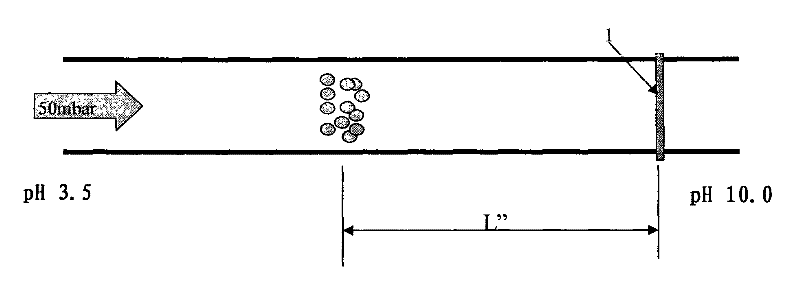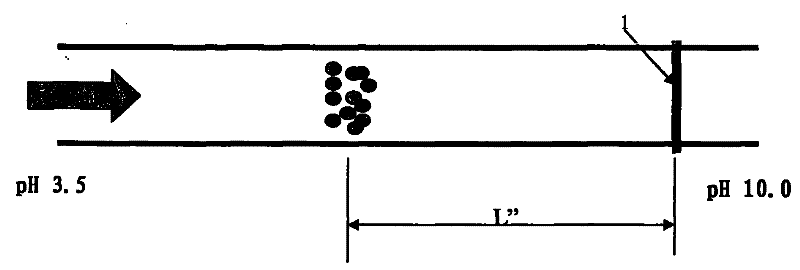Method for detecting microorganism isoelectric point by adopting immobilized pH gradient capillary isoelectric focusing (CIEF)
An isoelectric focusing and capillary technology, applied in the field of biological analysis, can solve the problems of reducing the stability and sensitivity of microbial detection, unstable UV detection signal, uneven distribution of ampholytes, etc. The effect of faster migration
- Summary
- Abstract
- Description
- Claims
- Application Information
AI Technical Summary
Problems solved by technology
Method used
Image
Examples
Embodiment Construction
[0025] Fused silica capillary (100μm i.d. capillary column length 38.5, effective length 30cm, detection window 8.5cm from the outlet end) was washed with 0.1M HCl for 10min, water for 5min, 1M NaOH for 20min, 0.1M NaOH for 20min, water for 20min and methanol for 20 minutes, blown dry with nitrogen and set aside. Add 0.3ml of isocyanate to 5ml of anhydrous pyridine, mix well, inject into the capillary with a manual pump, and react at 70°C for 12 hours to bond the isocyanate to the inner wall of the capillary. After the reaction, wash the capillary with toluene, methanol, triple distilled water, and phosphate buffer saline (PBS, 20 mM pH 7.0) for 10 min each. A carrier ampholyte solution (Ampholine pH 3.5-10.0, dissolved in 20 mM phosphate buffer solution at a volume ratio of 4%) was injected into the inner wall of the capillary with a manual pump. Cathode buffer is 20mM NaOH solution, anode buffer is 20mM H 3 PO 4 solution, focusing at 15kV. After focusing for 10 minutes, ...
PUM
| Property | Measurement | Unit |
|---|---|---|
| length | aaaaa | aaaaa |
Abstract
Description
Claims
Application Information
 Login to View More
Login to View More - R&D
- Intellectual Property
- Life Sciences
- Materials
- Tech Scout
- Unparalleled Data Quality
- Higher Quality Content
- 60% Fewer Hallucinations
Browse by: Latest US Patents, China's latest patents, Technical Efficacy Thesaurus, Application Domain, Technology Topic, Popular Technical Reports.
© 2025 PatSnap. All rights reserved.Legal|Privacy policy|Modern Slavery Act Transparency Statement|Sitemap|About US| Contact US: help@patsnap.com



